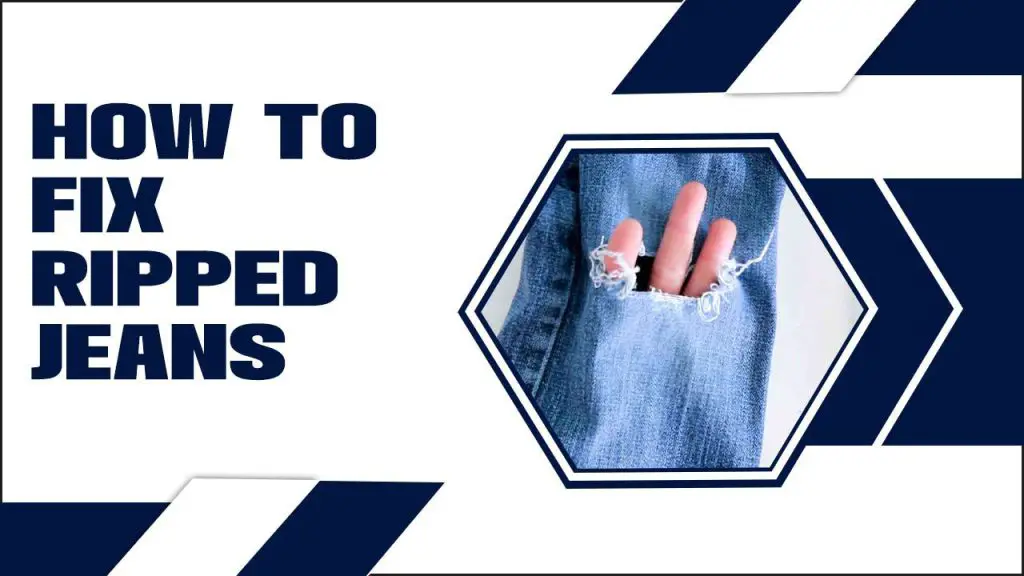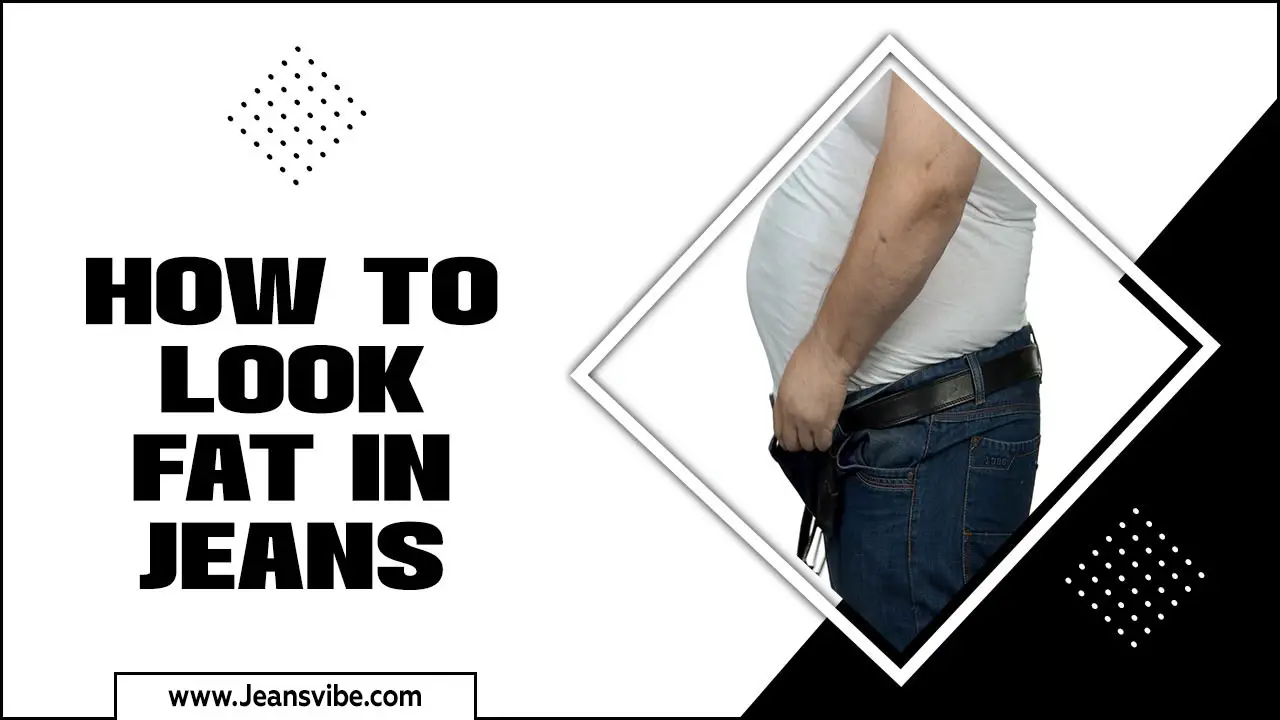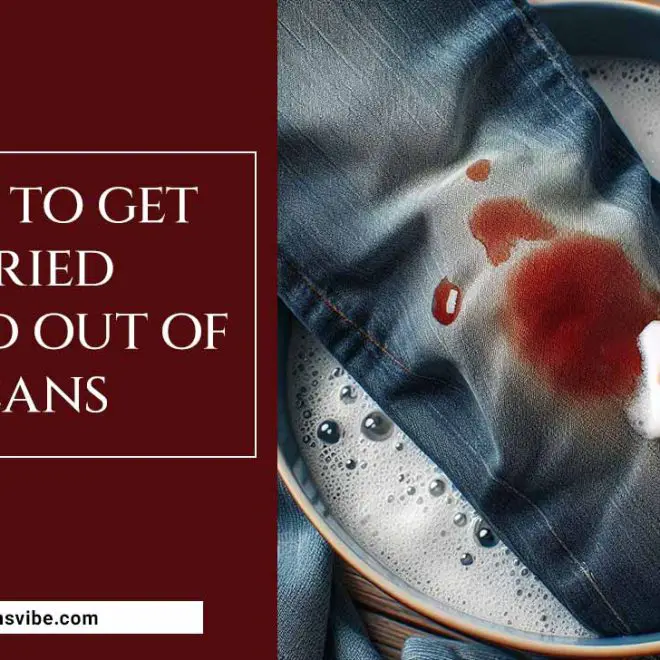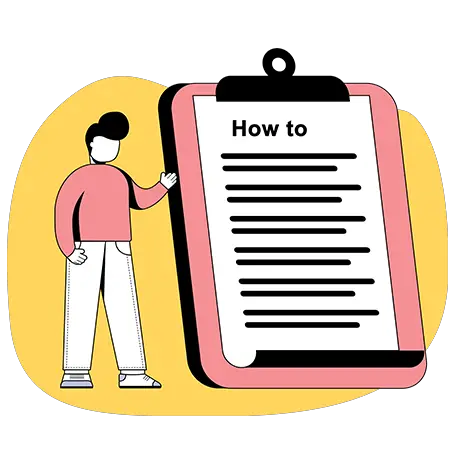Ripped jeans have become a popular fashion trend with edgy and laid-back style. However, it can be quite disheartening when your favorite pair of jeans gets a rip or hole in an unwanted area.
Not only does it affect the overall aesthetic of your outfit, but it can also be a hassle to find a suitable replacement. But fret not, as there are ways to fix ripped jeans and give them a new life.
Here, we will guide you through a 7 step process of mending your ripped jeans and tell you everything you need to know about how to fix ripped jeans. Let’s jump into the process directly.
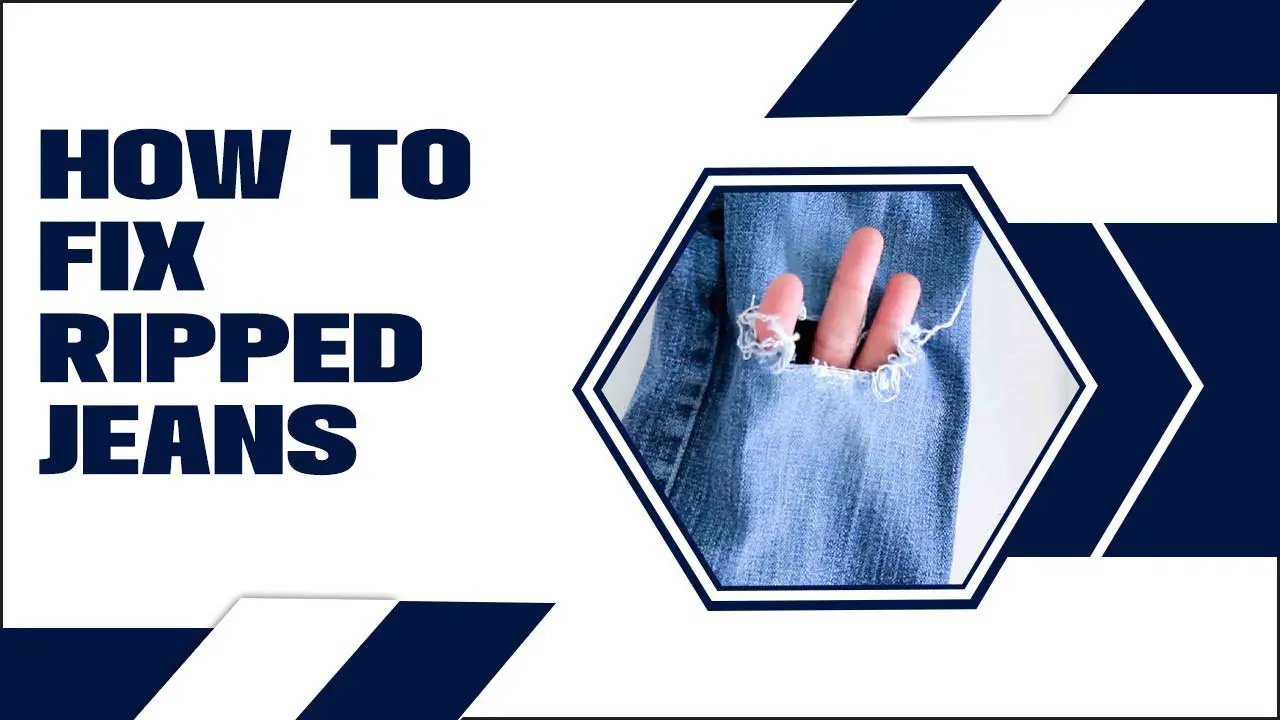
Step 1: Preparations

Gather materials like thread, a needle, scissors, and a patch to fix ripped jeans. Before choosing a patch, check the size and location of the rip to ensure it will be covered effectively. It is important to wash and dry the jeans beforehand, as this ensures that the area being repaired is clean.
Next, carefully cut off any loose threads or frayed edges around the rip, creating a neat and even surface. Lastly, iron the area around the rip using even heat to create a smooth surface for the patch to adhere to.
Step 2: Sewing The Torn Fabric

Take a close look at the tear and assess whether it can be fixed with a simple stitch or requires more extensive measures. Once you’ve determined the best approach, begin sewing the torn fabric using small, neat stitches.
This will help ensure a secure and sturdy repair. To reinforce the repair, apply fabric glue to the area, which will help keep everything in place. After sewing and gluing, trim any excess threads and inspect the repair to ensure it looks neat and tidy.
Step 3: Reinforcing Seams
To reinforce the seams of your ripped jeans, use a needle and thread to sew any holes or close any tears. This will ensure that the fabric is tightly secured and prevent further damage.
Additionally, a fabric patch should be applied to the inside of the jeans to reinforce the area where the rip occurred. This will provide extra strength and stability to the weakened fabric. Consider using a sewing machine to create a zigzag stitch along the seam for added durability.
Step 4: Add Patches
Choose a patch that matches the color and texture of your jeans. Cut the patch to size, leaving extra fabric on the edges. Pin the patch to the inside of the jeans, covering the rip. Use a sewing machine or needle and thread to sew the patch onto the jeans, stitching all edges securely. Trim any excess fabric from the patch. Repeat any additional rips or holes in the jeans.
Step 5: Consider Iron-On Patches

This straight stitch will effectively close the rip and reinforce the fabric. However, reinforcement patches, often made from scrap denim or thin webbing, are recommended for larger or more vulnerable areas. These patches provide an extra layer of protection to prevent further tearing.
Consider using iron-on patches if you’re looking for a quick and easy fix. These patches cover up small rips or tears and can be easily applied with heat. Place the patch over the damaged area, ensuring it covers the entire rip, and press with an even heat. The adhesive on the back of the patch will activate and bond to the fabric, providing a seamless repair.
Step 6: Apply A Decorative Element

Consider applying a decorative element to add a unique touch to your repaired jeans. For example, you can use contrasting thread or sashiko thread to create vertical lines or patterns on the pant leg.
Additionally, you can use fabric scraps to create an applique design on the outside of your jeans. Cut out a shape or design from an extra piece of fabric, attach it to the jeans using a glue stick or thin webbing, and sew around the edges with a zigzag stitch.
Step 7: Finish The Seams
To complete the repair process, it’s important to finish the seams of your jeans. This will ensure the mended area is secure and won’t unravel over time. Use a straight stitch along the edges of the torn fabric. Or apply a thin webbing or glue stick along the edges of the tear and press it together using an iron.
How Much Cost To Fix Ripped Jeans

Taking ripped jeans to a professional tailor or seamstress can cost more but ensures a high-quality repair. Prices can vary widely based on the tailor’s rates, the complexity of the repair, and whether additional materials like patches or interfacing are needed. Small repairs might start at around $10 to $20, while larger or more intricate repairs could range from $30 to $50.
Conclusion
Fixing ripped jeans is a cost-effective and sustainable way to extend the life of your favourite denim. With just a few simple steps to fix ripped jeans, you can mend your jeans and give them a new lease on life.
Whether you sew the torn fabric, reinforce the seams, add patches, or apply a decorative element, the result will be a pair of jeans that look as good as new. Remember to properly care for your repaired jeans and take preventative measures to avoid future rips.
Frequently Asked Questions
1.How Do You Fix Ripped Jeans Without Sewing?
Ans: To fix ripped jeans without sewing, you can use iron-on patches or fabric glue for small rips. Duct tape can be used temporarily for small tears. Opt for an iron-on denim patch or consult a tailor for larger tears. Ensure to follow the instructions carefully for a secure fix.
2.Can You Fix Ripped Jeans With Glue?
Ans: Yes, it is possible to fix ripped jeans with glue. However, remember that this may not be as durable as sewing. Glue can temporarily hold the fabric together, but consider using iron-on patches or sewing the ripped area for a more lasting repair. Always follow the instructions on the glue packaging and allow it to dry completely before wearing.
3.How Do I Patch This Tear In My Jeans?
Ans: Trim any frayed edges to patch a tear in your jeans. Cut a similar denim fabric patch and place it underneath the tear. Sew around the edge of the tear to secure the patch in place using a sewing machine or hand stitching. Stitch back and forth across the tear a few times for added durability.
4.Can I Use Iron-On Patches To Fix Ripped Jeans?
Ans: Iron-on patches are a convenient and effective solution for fixing ripped jeans. Ensure the patch covers the entire rip, using an iron set to the appropriate temperature. For added durability, stitch around the edges of the patch. Take care not to overheat the fabric or patch while ironing.
5.Is It Possible To Make The Repaired Area Of My Jeans Look Like New Again?
Ans: Yes, it is possible to make your jeans’ repaired area look new again. Use matching thread and stitch around the patch’s edges for a blended look. Iron-on patches can also be used for a seamless appearance. Follow care instructions to prevent further damage.
6.Can Ripped Jeans Be Repaired If The Fabric Is Frayed?
Yes, ripped jeans can be repaired even if the fabric is frayed. The repair methods can vary depending on the extent and location of the damage. Here are a few approaches:
- Patch Fabric
- Fabric Glue
- Darning:
- Iron-On Patches
7.What Is The Best Thread For Repairing Jeans?
The best thread for repairing denim jeans should be strong and durable. Here are some options:
- Heavy-Duty Polyester Thread
- Cotton-wrapped polyester Thread combines
- Denim Thread
- Color-Matching Thread
8.How Do You Fix Ripped Jeans Without Sewing?
Using fabric glue or iron-on patches, you can fix ripped jeans without sewing. Apply fabric glue directly to the ripped area, press the edges together, and let it dry. For iron-on patches, place the patch over the rip and apply heat with an iron according to the instructions. Both methods provide a quick and durable repair.


